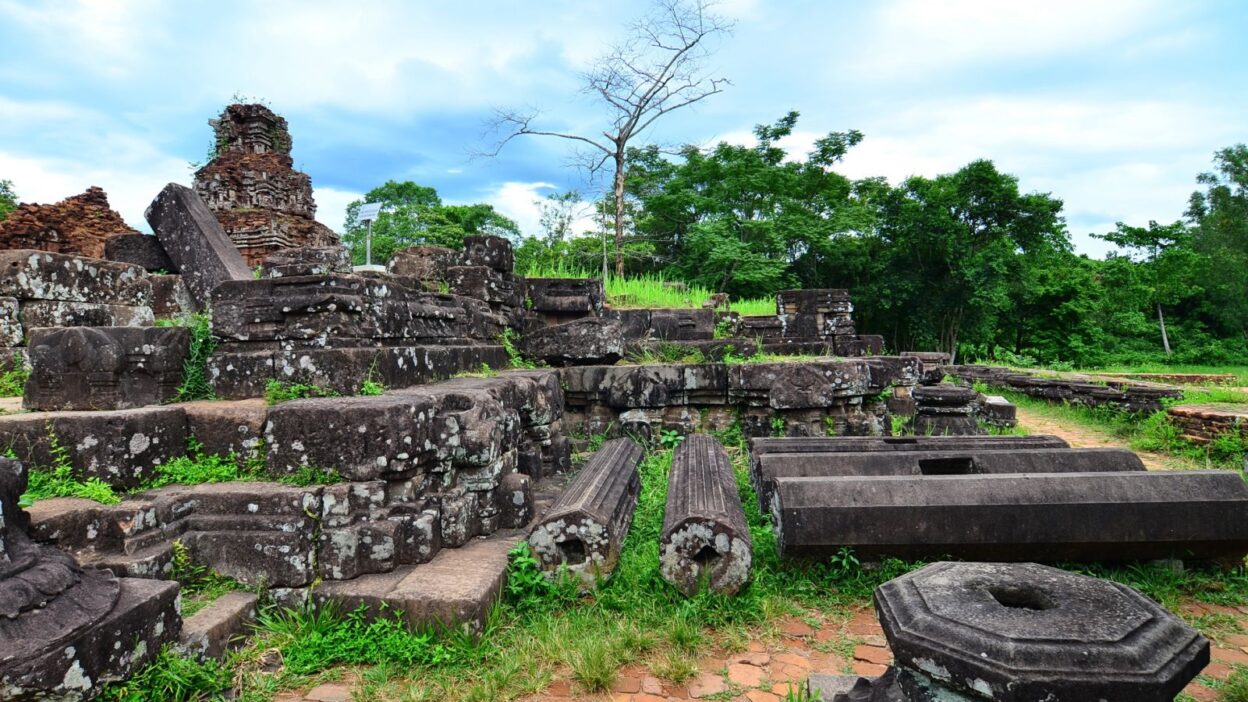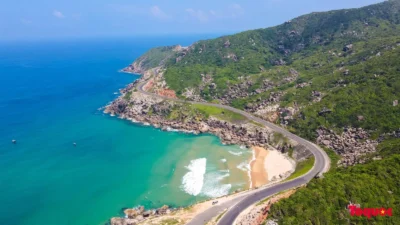Hidden amid verdant hills in Quảng Nam Province, the My Son sanctuary is Vietnam’s premier Cham archaeological site. This comprehensive guide covers everything you need—history, architecture, top attractions, transport, tickets, itineraries, local cuisine, and insider tips—to plan the perfect visit to My Son sanctuary and make the most of this UNESCO World Heritage treasure.
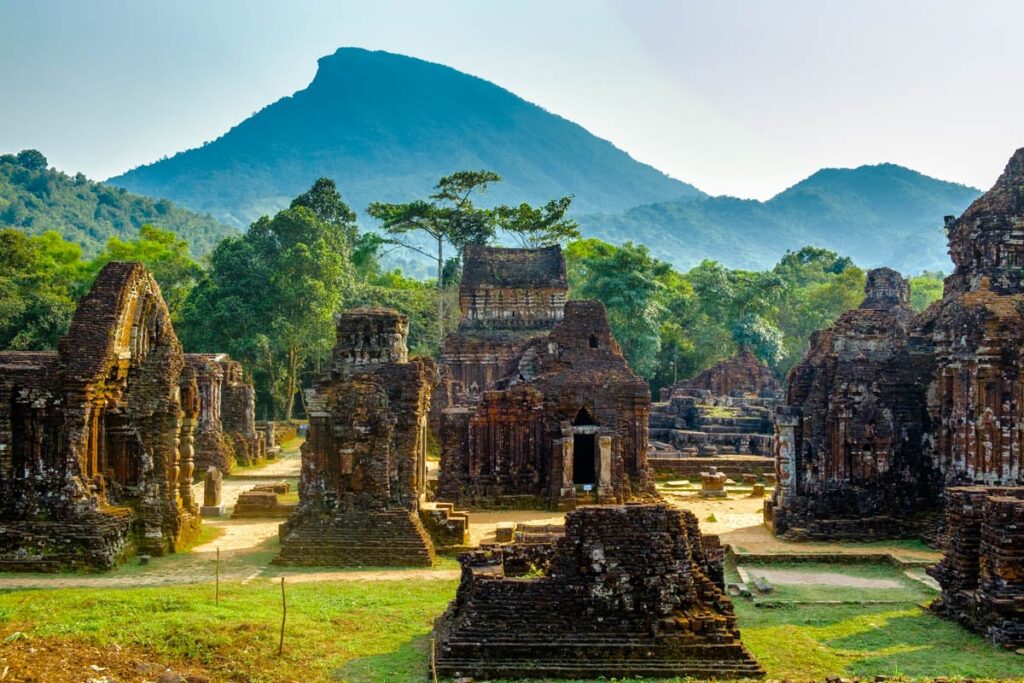
1. Introduction: Discovering My Son Sanctuary
Tucked into a lush valley of the Truong Son Range, the My Son sanctuary is an extraordinary cluster of red-brick Cham temple towers that chronicle more than a millennium of artistry, spirituality, and empire. Once the religious heartland of the Champa Kingdom (4th–14th centuries), My Son sanctuary now stands as a testament to the ingenuity of Cham brickmakers, sculptors, and priests.
A visit here transports you into a world of ancient Hindu rites, intricate bas-reliefs, and moss-covered monuments framed by emerald rice paddies. In this guide, we’ll delve into every aspect of My Son sanctuary—from its rich history and architectural marvels to practical tips and local flavors—to ensure your journey is seamless, meaningful, and unforgettable.
2. Rich History & UNESCO World Heritage Status
The story of My Son sanctuary began in the 4th century under King Phạm Hồ Đạt, who established the site as Champa’s spiritual capital dedicated primarily to the worship of Shiva (known locally as Bhadresvara) . Over the next thousand years, successive Champa rulers expanded and embellished My Son, constructing over 70 towers grouped into eight distinct clusters (A through H). Cham artisans perfected a unique red-brick construction method, interlocking bricks without mortar, which has allowed many towers to withstand centuries of weather, war, and neglect.
In 1999, UNESCO inscribed My Son sanctuary as a World Heritage Site, citing its “outstanding universal value” as the most significant surviving example of Champa civilization and a masterpiece of brick architecture in Southeast Asia. Today, My Son sanctuary remains both an archaeological wonder and a living cultural landscape, where Cham descendants continue to honor ancestral traditions through dance, music, and ceremony.
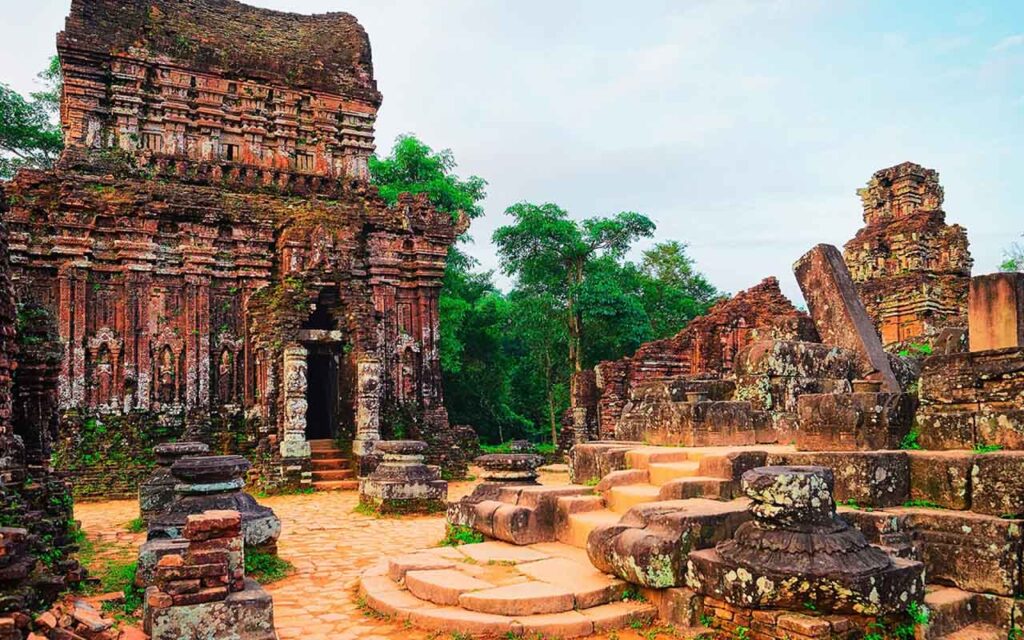
3. Getting There & Ticket Information
Location
- Address: Duy Phú Commune, Duy Xuyên District, Quảng Nam Province, Vietnam
- Distance from Major Hubs:
- Da Nang: 60 km (≈ 1.5 hours by car)
- Hội An: 50 km (≈ 1 hour by car)
Entrance Fees & Hours
- Foreign Visitors: 150,000 VND (~USD 6.50)
- Vietnamese Visitors: 100,000 VND (~USD 4.30)
- Opening Hours: Daily, 6:00 AM–5:00 PM
Transport Options
- Private Car or Taxi: Door-to-door convenience; ~1.5 hours from Da Nang or 1 hour from Hội An.
- Motorbike Rental: 150,000–200,000 VND/day; scenic ride along National Highway 1 and Provincial Road 537.
- Public Bus: Da Nang Bus #06 departs every 30 minutes from Sơn Trà Bus Station; fare 8,000–30,000 VND .
- Guided Tour: Combined Da Nang/Hội An day trips often include hotel pickup, guide, and entrance fee—ideal for stress-free planning.
4. Architecture & Layout of My Son Sanctuary
My Son sanctuary is arranged in eight clusters (A–H) spanning roughly a 2 km diameter valley. Each cluster represents different construction phases:
- Group A (4th–8th centuries): Core temples with the tallest, best-preserved towers, featuring intricate lintels and carved sandstone doorways.
- Group B & C (9th–10th centuries): Transitional phases showcasing new decorative motifs and expanded courtyards.
- Group D–F (11th–12th centuries): Many towers partly ruined by time and war; remarkable reliefs of dancers, deities, and mythical beasts.
- Group G & H (13th–14th centuries): Later Cham structures characterized by simpler, sturdier forms, reflecting shifts in religious practice.
Cham masons shaped kiln-fired bricks to exact dimensions, enabling precise interlocking without mortar. Sandstone elements—doors, window frames, and sculptures—were imported from quarries in Tra Kieu and carved with depictions of Rama and Sita, Shiva’s iconography, and scenes from the Ramayana.
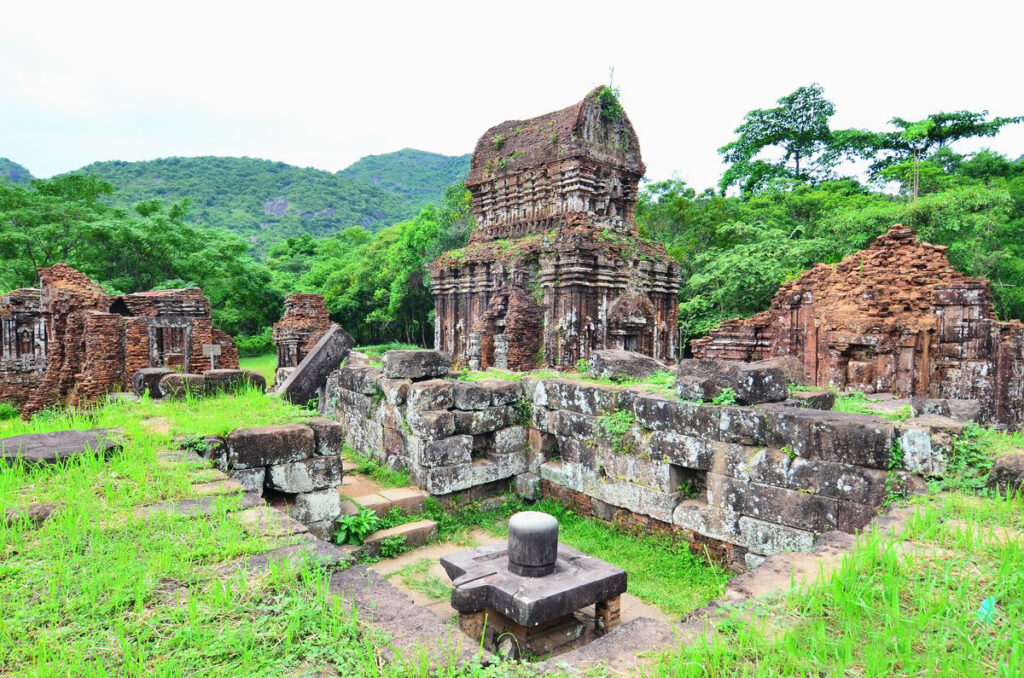
5. Top Experiences and Highlights
Exploring My Son sanctuary offers a blend of architectural marvels and cultural immersion. Here are the must-do experiences:
5.1. Group A: The Heart of My Son
- Tower A1 (Main Sanctuary): The tallest tower, standing over 25 meters, dedicated to Shiva. Marvel at the finely carved sandstone lintel depicting Shiva dancing on a lotus.
- Museum & Visitor Center: Before entering the ruins, view artifacts, scale models, and interactive displays that contextualize the site’s evolution and recent restoration efforts.
5.2. Groups B–D: Hidden Treasures
- Group B: Features the “Red Pavilion” with an ornate sandstone porch and remnants of a covered walk.
- Group C & D: A cluster of medium-sized towers enveloped by tropical foliage—perfect for atmospheric photography at dawn.
5.3. Groups E–H: Off-the-Beaten-Path Ruins
- Trek through candlelit pathways at sunset to reach these more remote clusters, where moss-clad bricks and creeping vines create a mystical ambiance.
5.4. Apsara Dance & Cultural Performances
Inspired by the sculpted apsaras (celestial dancers) on temple lintels, the “Soul of Stone” ensemble performs traditional Cham dances within the ruins courtyard. Dressed in billowing silk and headdresses, dancers move with hypnotic grace to the beat of paranưng drums and saranai flutes. Performances run daily at midday and late afternoon—reserve seats early during peak season.
5.5. Annual Katê Festival
Held each July (Cham lunar calendar), Katê is a 3-day harvest festival honoring ancestors and rice gods. At My Son sanctuary, villagers clad in traditional garb lead processions, offer rice cakes, and perform ceremonial drum rituals. If your visit coincides, you’ll experience My Son sanctuary as a living cultural stage rather than a static ruin.
6. Sample Day Itineraries
Whether you base yourself in Da Nang or Hội An, these two itineraries help you maximize a My Son sanctuary day trip.
6.1. From Da Nang: Sunrise to Sunset (12–14 hours)
- 6:00 AM: Depart Da Nang; roadside coffee stop in Duy Phú.
- 7:30 AM: Arrive My Son sanctuary; buy tickets and watch introductory film.
- 8:00 AM: Guided tour of Group A (1 hour).
- 9:00 AM: Explore Groups B–D at your own pace (1 hour).
- 10:30 AM: Apsara dance performance and museum visit (45 minutes).
- 11:30 AM: Lunch at on-site café serving cơm gà (chicken rice) and local snacks.
- 12:30 PM: Self-guided trek to remote Groups E–H (1 hour).
- 2:00 PM: Depart for Da Nang or stop at Tra Kieu market for handicrafts and chè (sweet soup).
- 5:00 PM: Return to Da Nang.
6.2. From Hội An: Combined Heritage Circuit (10–12 hours)
- 8:00 AM: Depart Hội An in private car; scenic drive through rice paddies.
- 9:00 AM: Visit My Son sanctuary—Group A guided tour (1 hour).
- 10:15 AM: Apsara dance show (30 minutes).
- 11:00 AM: Free exploration of Groups B–D (1 hour).
- 12:00 PM: Lunch in Duy Xuyên town—grilled beef skewers and bánh đập.
- 1:30 PM: Transfer to Mỹ Sơn Buddha statue viewpoint for panoramic photos (30 minutes).
- 2:15 PM: Return to Hội An with optional stop at Tra Kieu ceramics village.
- 5:00 PM: Arrive Hội An—join sunset boat ride on the Thu Bồn River.
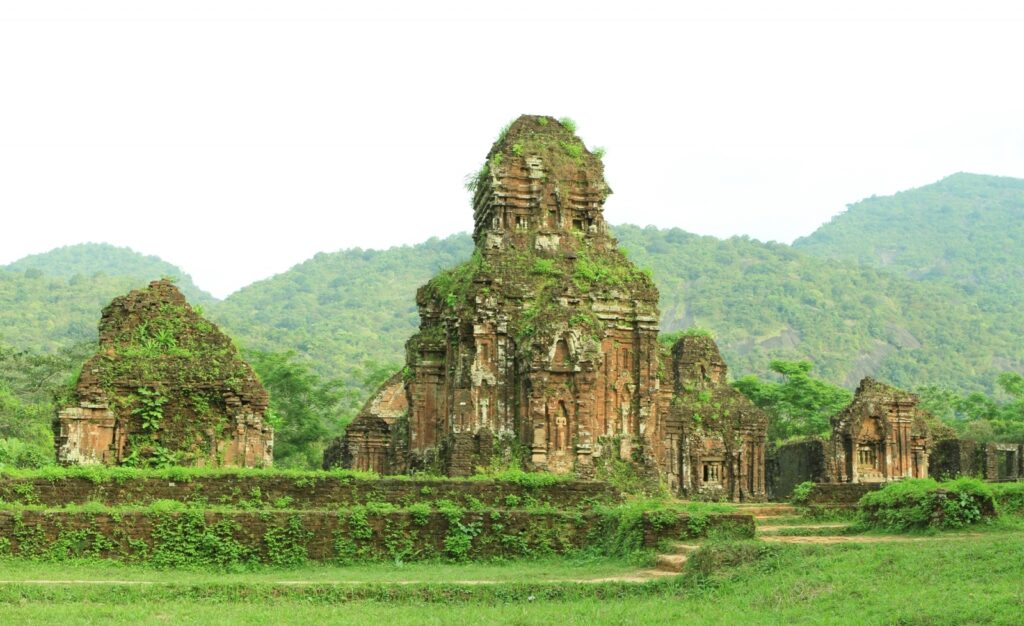
7. Best Time to Visit My Son Sanctuary
Vietnam’s central coast has two main seasons that shape your My Son sanctuary experience:
| Season | Months | Pros | Cons |
| Dry | February–August | Clear skies, pleasant hiking | Higher crowds (Jun–Jul) |
| Wet | September–January | Lush vegetation, fewer tourists | Afternoon showers, muddy paths |
- Optimal Window: February–April, when temperatures hover around 25–30 °C and skies are blue.
- Monsoon Caution: September–October can see heavy downpours; bring waterproof gear and sturdy shoes.
8. Where to Stay Near My Son Sanctuary
While most visitors opt for Da Nang or Hội An as their base, these local options put you closer to My Son sanctuary:
- Duy Phú Homestays: Simple guest rooms (USD 10–15/night) run by local families—breakfast included.
- Tra Kieu Village Retreats: Boutique bungalows amidst rice fields (USD 30–50/night), often offering bike rental.
- Tam Kỳ Hotels: Mid-range properties (USD 25–40/night) in a provincial city atmosphere.
- Da Nang & Hội An: Wide accommodation spectrum from hostels (USD 8/night) to luxury resorts (USD 100+/night), with daily shuttle tours to My Son sanctuary.
9. Local Cuisine & Dining Tips
No visit to My Son sanctuary is complete without tasting Quảng Nam’s regional specialties:
| Dish | Description | Where to Try |
| Bê Thui Cầu Mống | Charcoal-roasted veal slices wrapped in rice paper with herbs | Duy Phú roadside stalls; Hội An Old Town cafés |
| Mì Phú Chiêm | Local rice noodles with pork, shrimp, and fish sauce | Tam Kỳ markets; Duy Xuyên eateries |
| Bánh Đập & Bánh Bèo | Crispy rice pancake “smash” & steamed rice cakes with shrimp | Tra Kieu ceramics village café |
| Cơm Gà Duy Xuyên | Fragrant chicken rice topped with scallion oil | On-site My Son café; Duy Xuyên central market |
| Chè Quảng Nam | Sweet dessert soup with beans, coconut milk, and jellies | Local dessert shops near Tam Kỳ |
Pair these with nước mắm Phú Quý dipping sauce and fresh Trà Đá (iced tea) for an authentic regional meal.
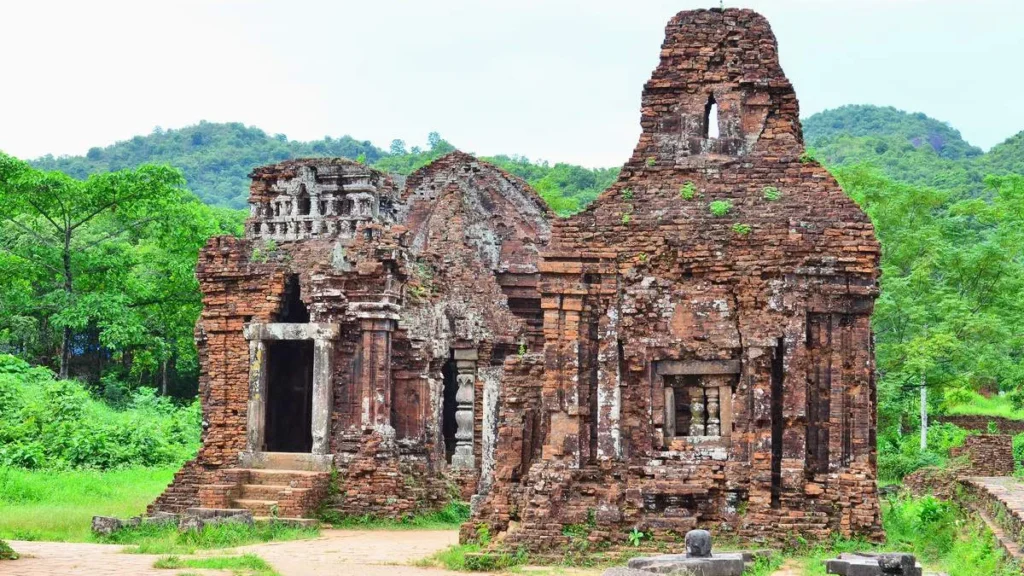
10. Practical Tips for Visiting
- Dress Code: Shoulders and knees covered when entering temple areas; loose, breathable fabrics recommended.
- Footwear: Closed-toe walking shoes with good grip for uneven, potentially slippery paths.
- Hydration & Sun Protection: Bring at least 1.5 L of water, hat, and high-SPF sunscreen.
- Photography: Drones prohibited; tripod use requires advance permission.
- Restrooms & Facilities: Limited on-site; use facilities at the Visitor Center before touring.
- Language: English-speaking guides available at ticket office; Vietnamese, French, and Cham guides can be arranged.
- Cash & ATMs: Bring sufficient VND—no ATM on-site; nearest machines in Duy Xuyên town.
11. Responsible Tourism & Site Preservation
- Stay on Designated Paths: Avoid walking on or touching fragile brickwork.
- No Littering: Carry out all trash; utilize bins at entry/exit points.
- Respect Ceremonies: During Katê and dance performances, observe quietly and do not interrupt rituals.
- Support Local Economy: Hire Cham guides, purchase handicrafts, and dine at village cafés.
- Follow Conservation Notices: Certain clusters may close for restoration—adhere to signage for your safety and preservation efforts.
12. Frequently Asked Questions (FAQs)
Q1: How long should I spend at My Son sanctuary?
Plan for 2–3 hours minimum to see Groups A–D, catch a dance performance, and visit the museum. For a deeper exploration (Groups E–H), allow 4–5 hours.
Q2: Is My Son sanctuary suitable for children?
Yes—children over age 6 can safely explore the main clusters. Keep a close eye on uneven ground and narrow steps.
Q3: Can I visit My Son sanctuary at night?
Nighttime access is restricted except during special Katê festival events. Standard opening hours are 6 AM–5 PM.
Q4: Are there wheelchair-accessible routes?
The Visitor Center and select elevated platforms are wheelchair accessible, but most ruins involve steps and uneven terrain.
Q5: Should I book tickets in advance?
Advance booking is not required except during the Katê festival. Arrive early to avoid midday crowds.
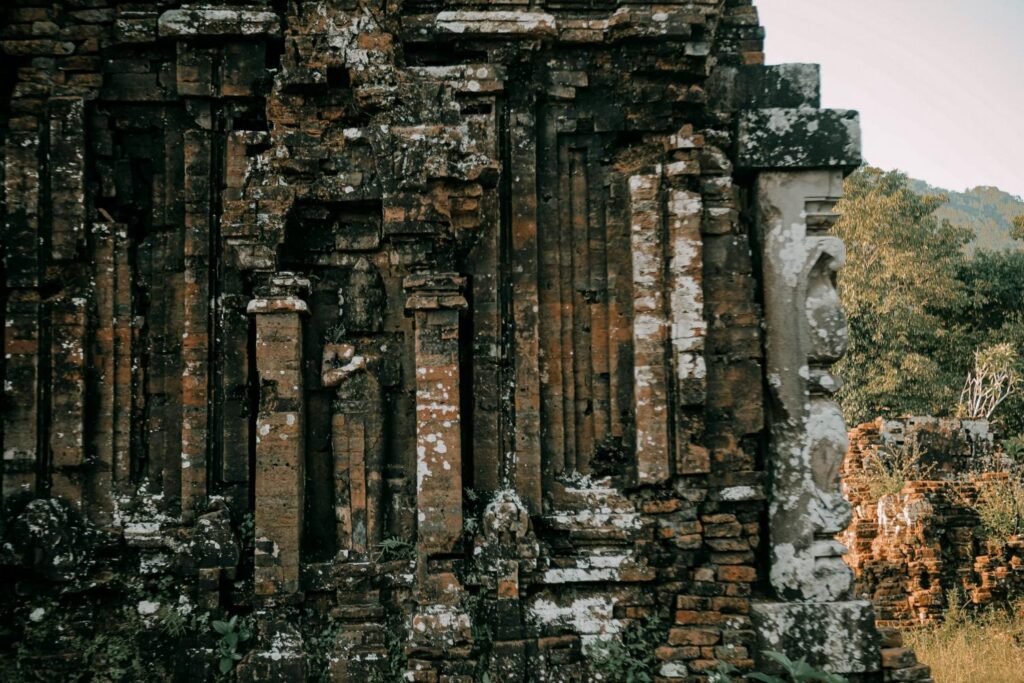
Embrace the Spirit of My Son Sanctuary
The My Son sanctuary stands as a living chronicle of ancient Cham civilization—where silent brick towers echo with centuries of ritual and artistry. From the soaring elegance of Group A’s central spires to the atmospheric remoteness of Groups E–H, every corner invites exploration and wonder.
By following this guide, you’re equipped with the knowledge to plan your visit: when to go, where to stay, what to eat, and how to travel responsibly. Pack your curiosity, respect the sacred grounds, and step into a realm where history, culture, and nature converge at Vietnam’s most iconic Cham ruin—My Son sanctuary.
Discover many interesting tours in Vietnam with VietnamTour.
See more post: Da Nang Beach Guide: Your Ultimate 2025 Shoreline Adventure

